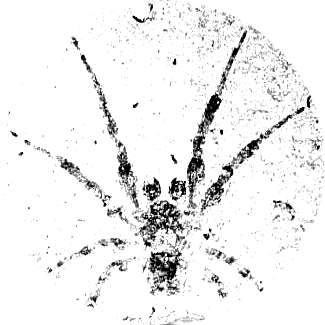Need help? Have a feature request? Please check out the
tethne-users group
.
Source code for tethne.writers.collection
"""
Write :class:`.GraphCollection` to a structured data format.
.. autosummary::
to_dxgmml
"""
import sys
PYTHON_3 = sys.version_info[0] == 3
if PYTHON_3:
unicode = str
import networkx as nx
import pickle as pk
[docs]def to_dxgmml(graphcollection, path): # [#61510094]
"""
Writes a :class:`.GraphCollection` to
`dynamic XGMML. <https://code.google.com/p/dynnetwork/wiki/DynamicXGMML>`_.
Dynamic XGMML is a schema for describing dynamic networks in Cytoscape 3.0.
This method assumes that `Graph` indices are orderable points in time
(e.g. years). The "start" and "end" of each node and edge are determined by
periods of consecutive appearance in the :class:`.GraphCollection` . Node
and edge attributes are defined for each `Graph`. in the
:class:`.GraphCollection`.
For example, to build and visualize an evolving co-citation network:
.. code-block:: python
>>> # Load some data.
>>> import tethne.readers as rd
>>> papers = rd.wos.read(datapath)
>>> # Build a Corpus, and slice it temporally using a
>>> # 4-year sliding time-window.
>>> from tethne.data import Corpus, GraphCollection
>>> D = Corpus(papers)
>>> D.slice('date', 'time_window', window_size=4)
>>> # Generate a GraphCollection of co-citation graphs.
>>> from tethne.builders import paperCollectionBuilder
>>> builder = paperCollectionBuilder(D)
>>> C = builder.build('date', 'cocitation', threshold=2)
>>> # Write the GraphCollection as a dynamic network.
>>> import tethne.writers as wr
>>> wr.collection.to_dxgmml(C, "/path/to/network.xgmml")
Parameters
----------
graphcollection : :class:`.GraphCollection`
The :class:`.GraphCollection` to be written to XGMML.
path : str
Path to file to be written. Will be created/overwritten.
Raises
------
AttributeError
C must be a tethne.classes.GraphCollection.
Notes
-----
Period start and end dates in this method are inclusive, whereas XGMML end
dates are exclusive. Hence +1 is added to all end dates when writing XGMML.
"""
# TODO: make sure C is a GraphCollection.
nodes = {}
for n in graphcollection.nodes():
nodes[n] = { 'periods' : [] } # Each period will be a dict with
# 'start' and 'end' values.
edges = {}
for e in graphcollection.edges():
edges[e] = { 'periods' : [] }
# Build node list.
current = []
for k in sorted(graphcollection.keys()):
graph = _strip_list_attributes(graphcollection[k])
preceding = [ c for c in current ]
current = []
for n in graph.nodes(data=True):
n_ = graphcollection.node_index[n[0]]
if n_ not in preceding: # Looking for gaps in presence of node.
nodes[n_]['periods'].append({'start': k, 'end': k})
else:
if k > nodes[n_]['periods'][-1]['end']:
nodes[n_]['periods'][-1]['end'] = k
current.append(n_)
nodes[n_][k] = {}
for attr, value in n[1].iteritems():
if type(value) is str:
value = value.replace("&", "&").replace('"', '')
nodes[n_][k][attr] = value
# Build edge list.
current = []
for k in sorted(graphcollection.keys()):
graph = _strip_list_attributes(graphcollection[k])
preceding = [ c for c in current ]
current = []
for e in graph.edges(data=True):
e_key = (graphcollection.node_index[e[0]],
graphcollection.node_index[e[1]])
if e_key not in preceding: # Looking for gaps in presence of edge.
try:
edges[e_key]['periods'].append( { 'start': k, 'end': k } )
except KeyError:
e_key = (graphcollection.node_index[e[1]],
graphcollection.node_index[e[0]])
edges[e_key]['periods'].append( { 'start': k, 'end': k } )
else:
if k > edges[e_key]['periods'][-1]['end']:
edges[e_key]['periods'][-1]['end'] = k
current.append(e_key)
edges[e_key][k] = {}
for attr, value in e[2].iteritems():
if type(value) is str:
value = value.replace("&", "&").replace('"', '')
edges[e_key][k][attr] = value
# Write graph to XGMML.
xst = '<?xml version="1.0" encoding="UTF-8" standalone="yes"?>\n'
sg = '<graph>\n'
eg = '</graph>'
nst = '\t<node label="{0}" id="{0}" start="{1}" end="{2}">\n'
ast = '\t\t<att name="{0}" type="{1}" value="{2}" start="{3}" end="{4}"/>\n'
enn = '\t</node>\n'
est = '\t<edge source="{0}" target="{1}" start="{2}" end="{3}">\n'
eas = '\t\t<att name="{0}" type="{1}" value="{2}" start="{3}" end="{4}"/>\n'
ene = '\t</edge>\n'
with open(path, "w") as f:
f.write(xst) # xml element.
f.write(sg) # Graph element.
for n in nodes.keys():
for period in nodes[n]['periods']:
label = unicode(n).replace("&", "&").replace('"', '')
# Node element.
f.write(nst.format(label, period['start'], period['end']+1))
for i in sorted(nodes[n].keys()):
if period['start'] <= i <= period['end']:
for attr, value in nodes[n][i].iteritems():
# Type names are slightly different in XGMML.
dtype = _safe_type(value)
attr = unicode(attr).replace("&", "&")
# Node attribute element.
f.write(ast.format(attr, dtype, value, i, i+1))
f.write(enn) # End node element.
for e in edges.keys():
for period in edges[e]['periods']:
src = unicode(e[0]).replace("&", "&").replace('"', '')
tgt = unicode(e[1]).replace("&", "&").replace('"', '')
start = period['start']
end = period['end'] + 1
# Edge element.
f.write(est.format(src, tgt, start, end))
for i in sorted(edges[e].keys()):
if period['start'] <= i <= period['end']:
for attr, value in edges[e][i].iteritems():
# Type names are slightly different in XGMML.
dtype = _safe_type(value)
# Edge attribute element.
f.write(eas.format(attr, dtype, value, i, i+1)
.replace("&", "&"))
f.write(ene) # End edge element.
f.write(eg) # End graph element.
def _strip_list_attributes(graph_):
"""Converts lists attributes to strings for all nodes and edges in G."""
for n_ in graph_.nodes(data=True):
for k,v in n_[1].iteritems():
if type(v) is list:
graph_.node[n_[0]][k] = unicode(v)
for e_ in graph_.edges(data=True):
for k,v in e_[2].iteritems():
if type(v) is list:
graph_.edge[e_[0]][e_[1]][k] = unicode(v)
return graph_
def _safe_type(value):
"""Converts Python type names to XGMML-safe type names."""
if type(value) is str: dtype = 'string'
if type(value) is unicode: dtype = 'string'
if type(value) is int: dtype = 'integer'
if type(value) is float: dtype = 'real'
return dtype

